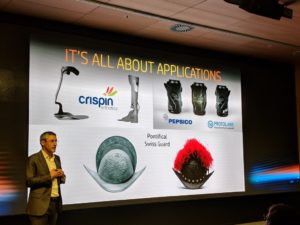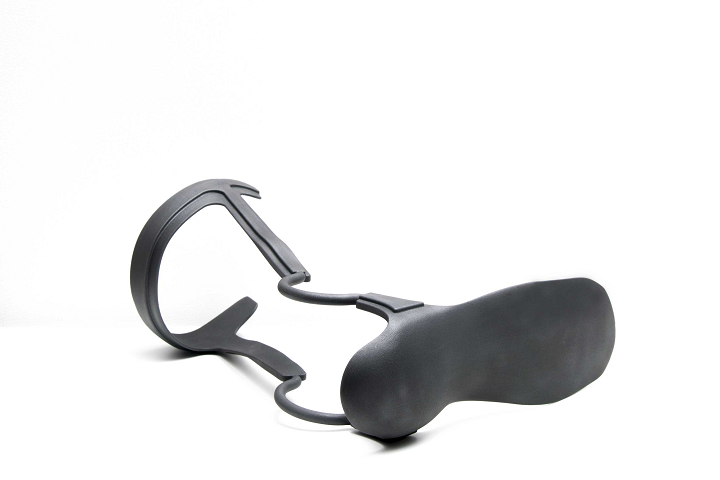In 2016, 3D printing, scanning, and inspection business Europac 3D, headquartered in the UK, was named a UK Channel Partner for HP, which means that it’s responsible for the sales and servicing of all of HP’s 3D printing equipment in the country. Recently, Crispin Orthotics contacted Europac 3D in search of a new 3D printing and CAD software package that would be able to keep up with the demand for orthotic devices, while also speeding up production and lowering 3D printing costs, and the company suggested HP’s 4200 Multi Jet Fusion 3D printer for the job.
Crispin is a top HCPC registered clinic specializing in producing and maintaining orthotic devices, and has already worked with HP in the past. By making a further investment in its MJF technology, Crispin is able to produce parts that are strong and flexible enough to be made into orthotics that can endure a human’s everyday movements.“The HP Multi Jet Fusion 4200 is able to accurately mass produce bespoke orthotic devices, which in turn can cut costs and speed up production times,” said John Beckett, the Managing Director and Founder of Europac 3D. “Crispin Orthotic’s use of the HP’s Multi Jet Fusion printer is indicative of how additive manufacturing is revolutionising the orthotics industry.”
HP’s 4200 MJF can produce parts up to ten times faster, and at a 50% cost-per-part reduction, when compared to other SLS 3D printing systems. This reduced cost and increased speed means that Crispin will be able to 3D print hundreds of personal, customized orthotics in just 12 hours.
Crispin tested out its new HP 3D printer by pairing it with Siemens NX CAD software, featuring topology optimization, so its technicians could add strength to important areas and make designs more lightweight. In addition, the software is also capable of organizing multiple 3D parts so they nest, or perfectly fit, together on the print bed. This capability decreases the number of print jobs, which also lowers cost and increases speed.
“3D scanning and printing has revolutionised the speed and quality of parts we’re able to produce for clients. Having the ability to create a bespoke devise that is lightweight, durable and accurate to 0.2mm has obvious benefits to the user. The business also benefits from the speed of 3D printing parts as well as cost savings of approximately 40% on each part by removing the need for multiple components in the supply chain and assembly,” said Mark Thaxter, Managing Director of Crispin Orthotics.
“Using 3D scanning and printing also provides greater freedom on the design of products particularly those with complex geometry. Having the ability to vary the thickness of the device in certain parts also allows us to produce devices not possible with current methods of manufacturing.”
Crispin used its new HP MJF 3D printer, and its Siemens NX CAD, during a recent project. The combined technologies made it possible for the company to create a 3D printed arm orthotic with an integrated elbow joint and an attachment at the end, which makes it possible to pair up prosthetic devices with it. The device was 3D printed in a single part out of a durable but lightweight nylon material.
The sample parts that Crispin 3D printed on its new HP 4200 MJF system passed all of the necessary tests. But even more impressive is that the parts all had homogeneous strength in the three separate build axes, which just goes to show that build orientation does not have any negative impacts on the quality or strength of 3D printed parts.
Discuss this news and other 3D printing topics at 3DPrintBoard.com or share your thoughts in the Facebook comments below.
[Images provided by Europac 3D, unless otherwise noted]Subscribe to Our Email Newsletter
Stay up-to-date on all the latest news from the 3D printing industry and receive information and offers from third party vendors.
Print Services
Upload your 3D Models and get them printed quickly and efficiently.
You May Also Like
Making Space: Stratasys Global Director of Aerospace & Defense Conrad Smith Discusses the Space Supply Chain Council
Of all the many verticals that have been significant additive manufacturing (AM) adopters, few have been more deeply influenced by the incorporation of AM into their workflows than the space...
EOS in India: AM’s Rising Star
EOS is doubling down on India. With a growing base of aerospace startups, new government policies, and a massive engineering workforce, India is quickly becoming one of the most important...
PostProcess CEO on Why the “Dirty Little Secret” of 3D Printing Can’t Be Ignored Anymore
If you’ve ever peeked behind the scenes of a 3D printing lab, you might have caught a glimpse of the post-processing room; maybe it’s messy, maybe hidden behind a mysterious...
Stratasys & Automation Intelligence Open North American Tooling Center in Flint
Stratasys has opened the North American Stratasys Tooling Center (NASTC) in Flint, Michigan, together with automation integrator and software firm Automation Intelligence. Stratasys wants the new center to help reduce...





































